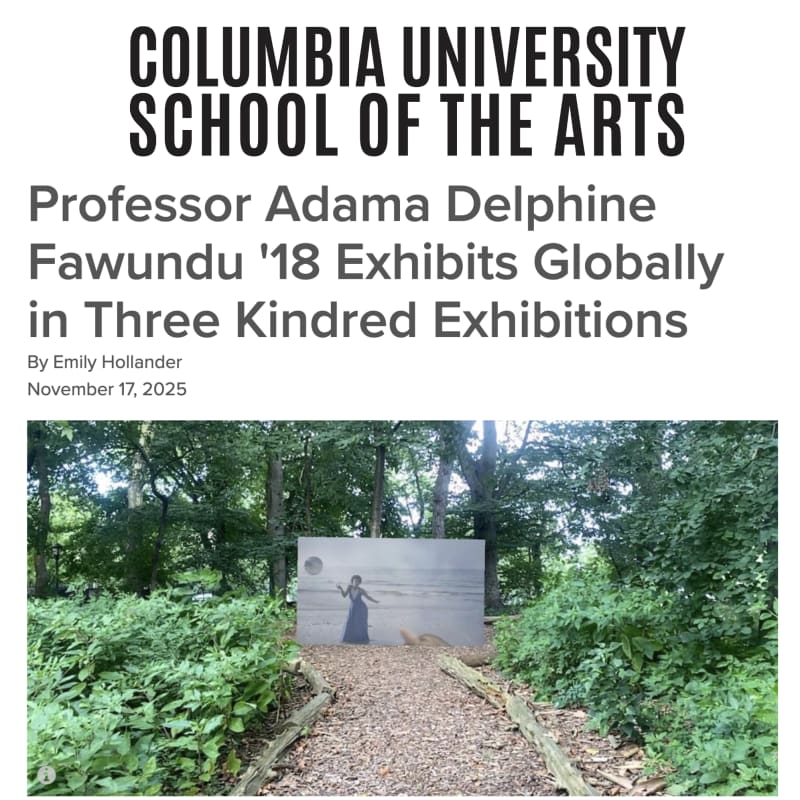Assistant Professor of Visual Arts Adama Delphine Fawundu '18 is currently exhibiting three interrelated works exploring the interconnectedness of geographies and our shared humanity—fittingly, these exhibitions take her work across the globe.
This creative outpouring includes solo exhibitions salt 17: Adama Delphine Fawundu at the Utah Museum of Fine Arts (UMFA), Praise House, up at the Harvey B. Gantt Center for African-American Arts & Culture in Charlotte, North Carolina, and a major installation in the 36th Bienal São Paulo in Brazil.
Praise House, curated by Dexter Wimberly, pushes geographic and disciplinary boundaries as it maps physical and metaphysical movements across Africa and its diaspora through photographic installation. Fawundu’s connections to the earth—and to the sacred materials it produces—grounds her connections across nations, to global kin.
In salt 17, these connections are realized tangibly through the inclusion of objects from UMFA’s African art collection alongside Fawundu's "kpoto patchwok" pieces, a process named for the Mende word for gathering fruits and nuts (kpoto) and the Krio word for piecing together textiles (patchwok). Mirroring this work is her two-channel video, Vibrations from the deep, shot in Nigeria, Congo, Sierra Leone, Ghana, Cuba, Brazil and the United States.
Vibrations from the deep shares its sound composition with Fawundu's 36th Bienal São Paulo installation, Vibrations from the deep, May the hands of the miners roar, let’s chant, vamos canter, tiki toyemba: Florest e vida, O gigantic acordou, May the yams in the farm grow well. Olokun has no rival. Aṣẹ. Axé O!
"This installation begins with its title—an intentional weaving of voices, chants, and incantations," Fawundu said. "It references the labor of Congolese miners in Goma, the mass protests for policy reform in Brazil, and the deep wisdom carried through Ifá cosmology, which continues to resonate across the Diaspora and beyond." The installation gathers fragments, just as the title does, combining material ephemera from Fawundu's travels, textiles inspired by her grandmother, historical documents on Zumbi and Quilombo resistance, and everyday photographs from the streets of Kinshasa, among others.
"I thought about what it meant to have these videos transmitting into the atmosphere at the same time on two different continents," said Fawundu. "My research extends within and beyond the written archive—it is experiential."


